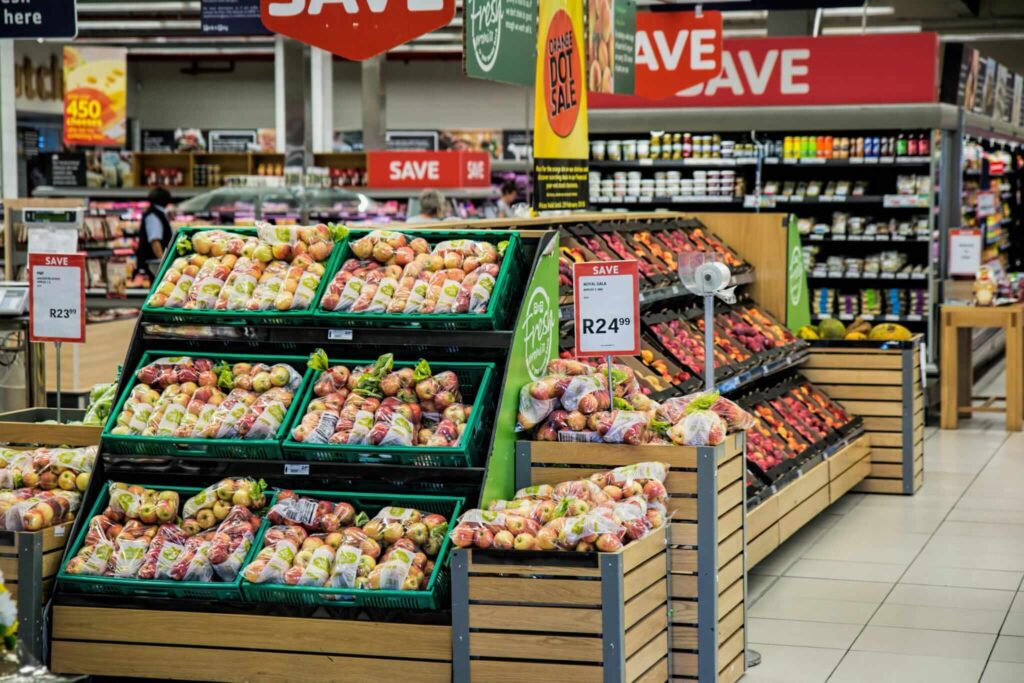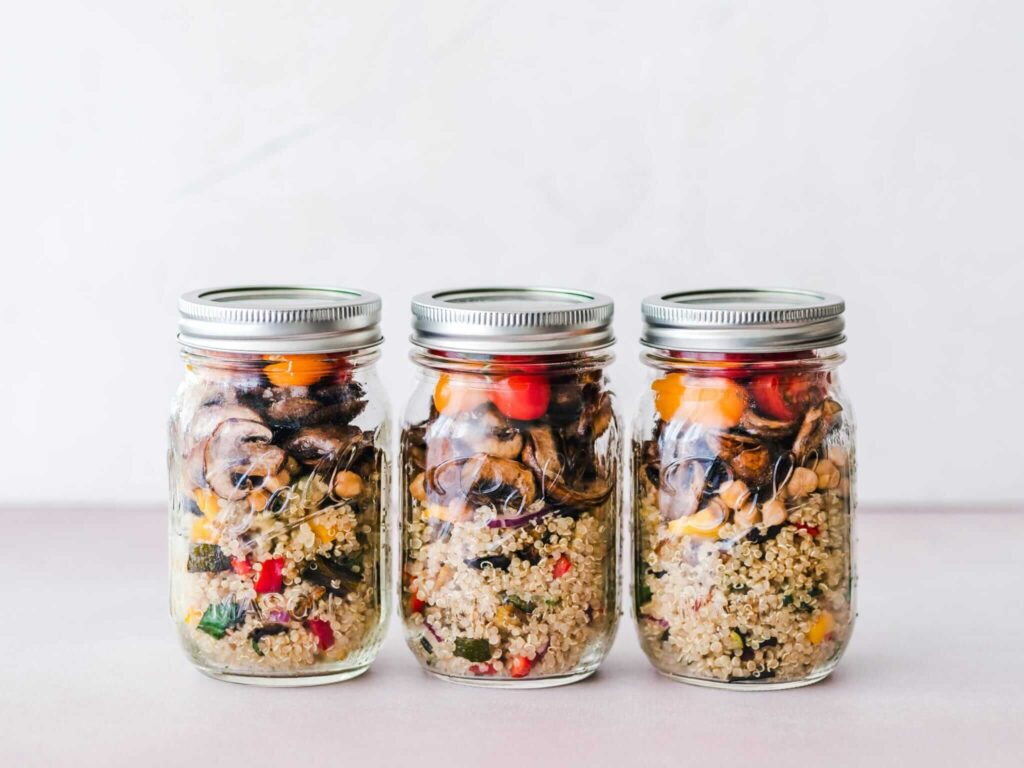How To Save Money On Groceries In College

Maintaining a healthy lifestyle on a tight budget is an average college student’s common challenge.
One area that significantly impacts finances is grocery shopping. Budget-friendly grocery shopping does not necessarily mean you have to eat unhealthy or bland food; it allows you to maximize your budget to enjoy flavourful and nutritional items that can be used in multiple recipes while saving money.
In this blog post, I’ll share practical tips on how to save money on grocery shopping as a college student without sacrificing nutrition or flavour.
Here are some tips that I use:
1. Budgeting and planning before heading to the store
This might sound like the easiest step, but it’s the hardest because, as they say, ‘the first step is always the hardest.’ However, mastering this step can give you a sense of control over your finances. Having a grocery budget before heading out to the store is essential to avoid impulse purchases or buying excess items. The easiest way to determine your grocery budget is to list the items and the quantity you need to buy.
This list gives you an approximate idea of how much you’ll be spending and prevents unnecessary waste. If you are stuck writing your grocery list, having a meal plan can help you decide what items to shop for. Also, you can think of the foods you eat (the most) or plan to eat to make a list of the items you would need to make those dishes.
2. Buying in Bulk
I recommend bulk buying to everyone. However, it should be strictly for non-perishable items or items you run out of fast. You can also bulk-buy frozen items, which you will store in your freezer for a long time. Bulk buying is very efficient because it saves you money and time. Sometimes bulk buying can also be buying a more oversized item, like buying a 10kg bag of rice rather than a 2kg bag.
Some items I bulk purchase or buy in larger sizes are rice, potatoes and toilet paper.
3. Coupons, Apps and Sales
Using coupons, money-saving apps and shopping sales can save you lots of money. I use various apps to view coupons, discounts, and sales at my local grocery store, which is more efficient than collecting paper flyers. Most stores, especially the big ones, have discounts occasionally, and these apps help keep you updated.
One trick I do is, after writing my grocery list, I search for each item on the app to see if there is a sale on the product. I then show the price displayed on the app at checkout to get a price match. Easy!
Be careful during sales because sometimes these companies increase the prices and then “cut” the prices to the original cost to make it seem like you are getting a discount when you are paying the total price or higher.

4. Comparison Shopping
Comparison shopping is easier if you have various grocery shops near you. I am not “loyal” to any particular grocery store. I shop where I am most likely to get the best deals in a period. Given the rising grocery prices, shopping around is essential for the best prices. Some of the apps used for coupons help with comparison shopping. You can also ask your friends and families to see if they spend less on items you purchase.
Shopping at places where the prices are lower does not mean the quality of the product is subpar. Different grocery stores can carry the same products at different prices (for various reasons).
5. Buying items with reduced or slashed prices
There are various reasons why a company might reduce the prices of items. It might be due to low demand, a regular sales period, or the item nearing its best-before or expiration date.
There are some things to take note of:
- If you do not need an item, do not buy it because it is on sale
- If you decide to buy items nearing the best-before or expiry date, make sure you plan to use them soon to avoid waste. For example, I buy slashed chicken breast, and I ensure I cut it and prepare it all to be sure it will last longer for my meal prep. If you purchase fruits that are not so fresh, make sure you cut and freeze them.
6. Shopping store brands
Most times, store brands’ products are cheaper than big brands’. I do not care what the brand of the product is so far; it tastes identical or better and contains ingredients similar to those of the other available brands. Most of these brands use the same manufacturer, and the same products are packed into different packaging. The only thing that differs is the name that is slapped on it.
If you have an allergy or picky immune system, stick to the brand you trust, even if it’s more expensive. However, for an average Joe, always consider alternative brands if they offer cheaper products that are similar.
7. Considering Alternatives and Improvising
Several alternatives to expensive products give a similar taste or do the same thing in a dish. You can swap branded items for store-brand, fresh produce for frozen ones, wild-caught fish for canned ones, quinoa for brown rice or couscous, maple syrup for honey, and takeout for homemade meals.
Considering alternatives also means that you should be able to improvise if you do not have all the ingredients for a recipe.
Sometimes, the alternative is nothing, especially if you are sure the recipe should taste just as good without that ingredient. Improvising helps you avoid buying ingredients or items you only use once, leading to waste.
8. Avoid impulse purchases
Always try as much as possible to buy only the items you need. Do not be swayed by promotions, low-cost items, hunger, emotion or even the person accompanying you to the store to buy more than you need. Always try to make a list and budget and ensure you stick to them

9. Meal Planning, Batch-cooking and meal prepping
Meal prepping, batch-cooking, and meal planning can significantly reduce grocery costs and food waste.
Meal prepping involves preparing parts of a meal in advance, like cutting vegetables or marinating meat. This method ensures you eat home-cooked meals without resorting to expensive takeout options during busy times. Preparing meals in advance helps save money by planning and portioning meals effectively.
Batch cooking lets you organize and store large quantities of food for future use. This approach saves time and allows bulk purchases, reducing overall cooking costs. Meal planning involves mapping out meals over some time to maximize ingredient use. This strategy helps avoid unnecessary purchases and ensures efficient use of groceries.
Do not starve yourself to save money on groceries; it’s unhealthy.
If you engage in unhealthy eating behaviours, visit a healthcare professional. If you need help with groceries, visit your local food bank or use resources provided by your college.
In conclusion, as a college student, saving money on groceries, eating well, and maximizing your limited budget without sacrificing quality or nutrition is possible.
Do you have any other tips you use to save money on groceries? Please share them in the comments.


